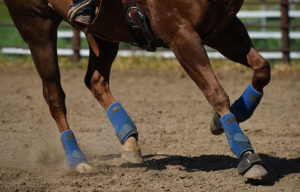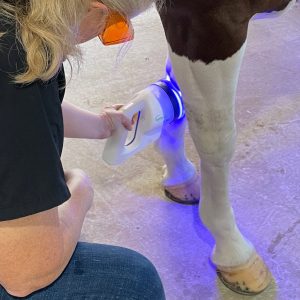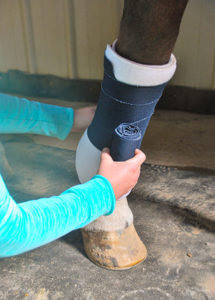Lameness and Pelvic Height
The results of a recent study published in the American Journal of Veterinary Research suggest that hind limb lameness in the horse can be evaluated most effectively and objectively by measuring changes in pelvic height during trotting.
- Topics: Article, Diagnosing Hoof Lameness
The results of a recent study published in the American Journal of Veterinary Research suggest that hind limb lameness in the horse can be evaluated most effectively and objectively by measuring changes in pelvic height during trotting.
Accurate assessment of lameness in horses is essential for making the correct diagnosis and deciding on the proper treatment. Detecting and evaluating hind limb lameness can be difficult, especially when the condition is mild or intermittent. Although several methods have been developed to assess forelimb lameness, few objective techniques exist for evaluating lameness of the hind limbs.
The lead investigator in the hind limb lameness study, Joanne Kramer, DVM, clinical assistant professor of equine surgery at the University of Missouri College of Veterinary Medicine, explained, “In the trotting horse, the pelvis normally rises and falls twice during each stride–once when the horse lands on the right hind limb and pushes off, and once when the horse lands on the left hind limb and pushes off.”
To measure changes in pelvic height in sound and lame horses, 17 adult horses were filmed while trotting on a treadmill. The hind feet of each horse were shod with custom-made, adjustable heart-bar shoes designed to induce temporary lameness by applying reversible pressure to the frog
Create a free account with TheHorse.com to view this content.
TheHorse.com is home to thousands of free articles about horse health care. In order to access some of our exclusive free content, you must be signed into TheHorse.com.
Start your free account today!
Already have an account?
and continue reading.
Written by:
Rallie McAllister, MD
Related Articles
Stay on top of the most recent Horse Health news with















